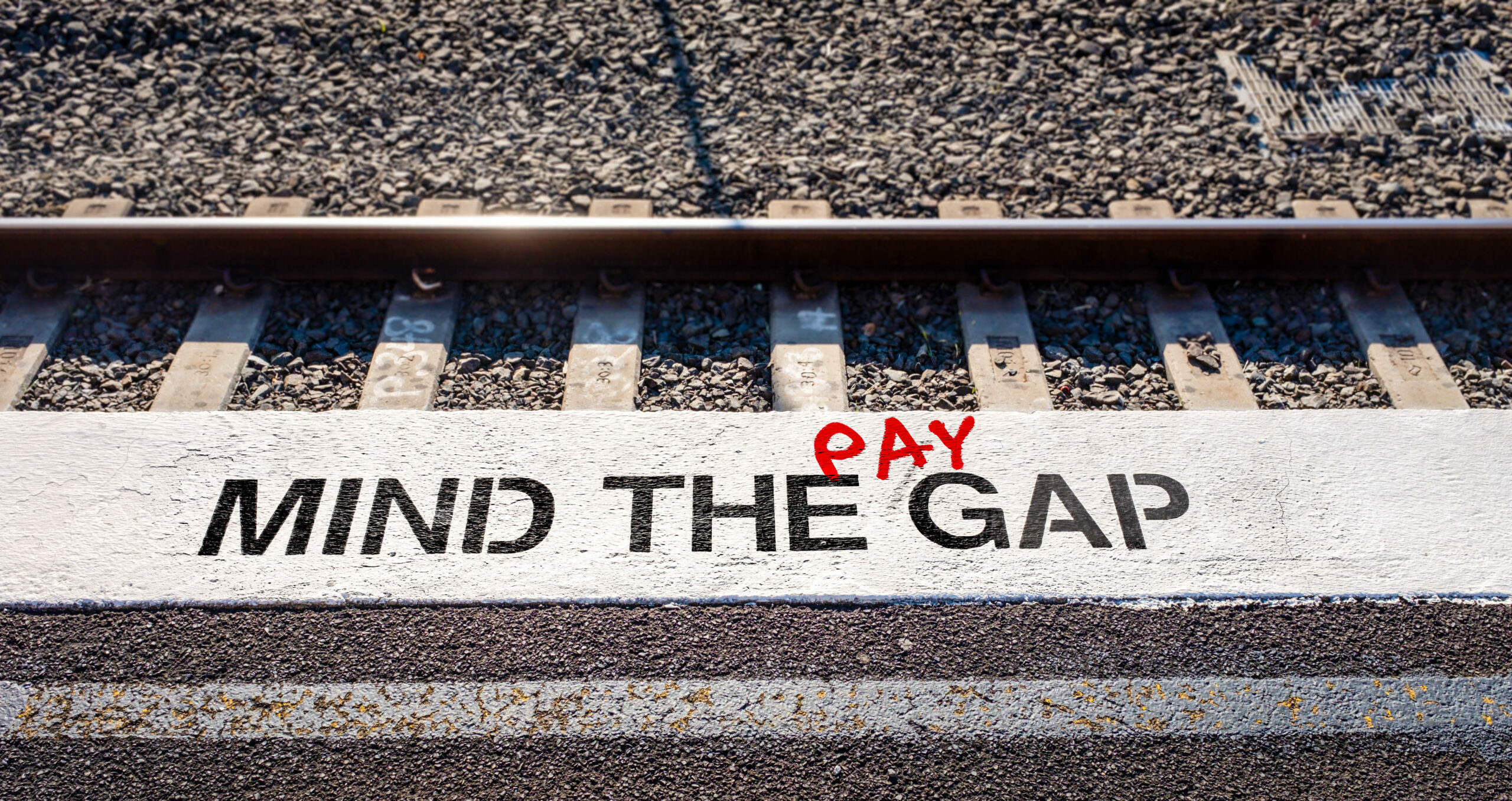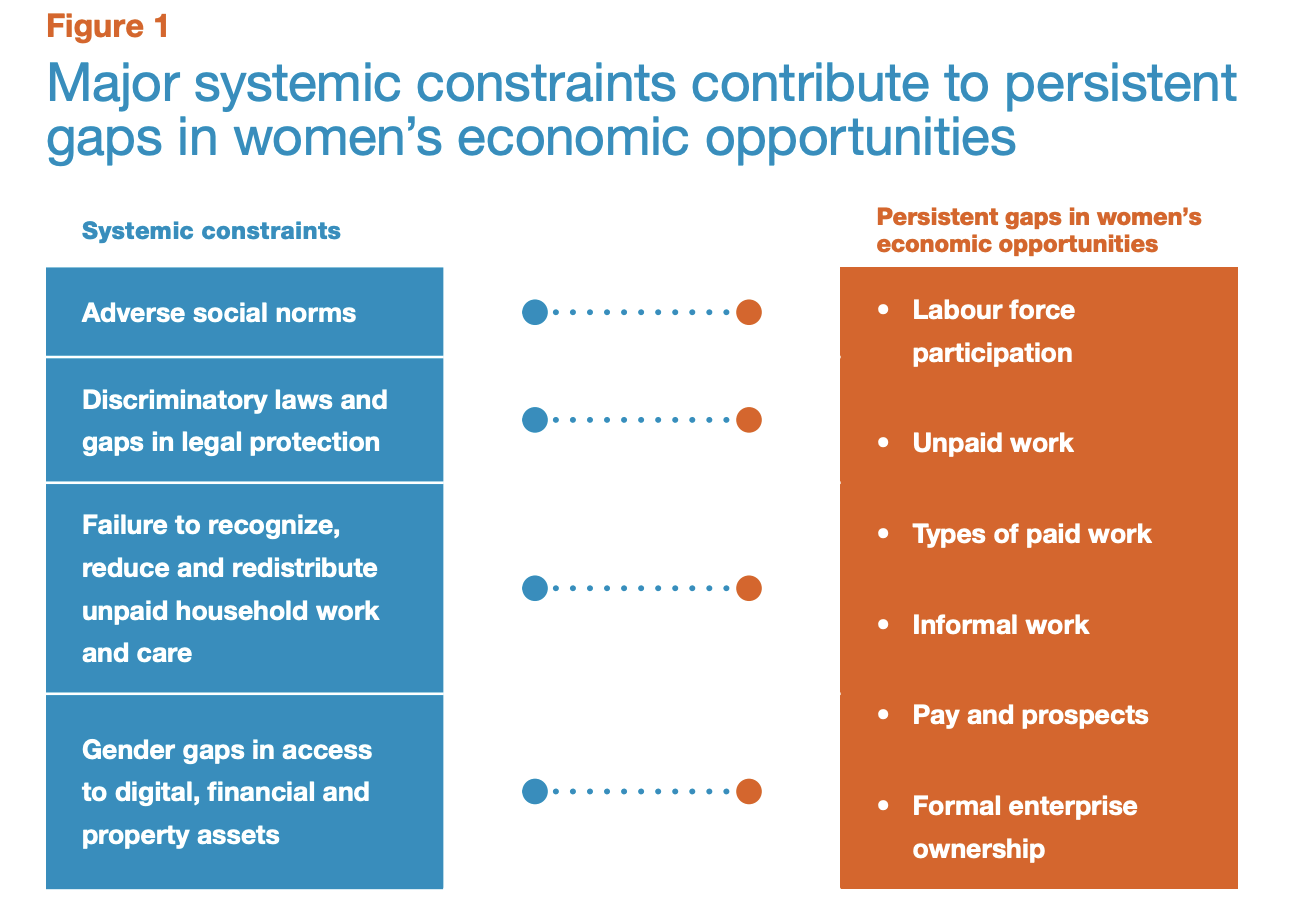Economic inequality by gender

Graffiti statement about pay gap between employees. Photograph By HollyHarry (Shutterstock, 2020).
Economic inequality by gender
The world is far from the goal of equal opportunity for all: circumstances beyond an individual’s control, such as gender… continue to affect one’s chances of succeeding in life (Roig et al., 2020).
Income at a glance
In its most simplistic form, we can assess economic inequality by gender by looking at income differences between men and women. This is the difference in earnings as the direct result of employment. This does not account for income received through other means, such as investments. Globally, the average income of a woman is roughly $11,000, whilst men earn a global average of $21,000 (World Economic Forum, 2020). These figures are calculated as Purchasing Power Parity (PPP). PPP refers to the measurement of prices in national currencies relative to the cost of goods.
Another way in which economic inequality can be measured is through assessing the gender wage gap. The Organisation for Economic Cooperation and Development (OECD) presents the gender wage gap through calculating the difference of male and female median wages divided by male median wages. This shows that currently there is a 13.5% difference in men and women’s median income. Despite a small increase within the last decade (from 14.5% in 2010), it shows very slow progress in the development of achieving economic gender equality (World Economic Forum, 2020).
The above figures provide a picture of the overall global economic gender inequality, however there are also vast regional disparities. The regions with the largest improvement in Economic Participation and Opportunity are North America (76%) and Eastern Europe and Central Asia (73%) (where 100% represents gender equality). The countries where women are found to be in the most deprived positions within the workplace are South Asia (37%) and North Africa (43%) (World Economic Forum, 2020).
The general picture which becomes apparent through the data shows that, in every region of the world, men are at an economic advantage over women, and nowhere in the world has economic equality been achieved.
Women in the workplace
Women are at an institutional disadvantage when it comes to becoming financially equal to men. The role of the woman as the carer is still prevalent within global society. It is estimated that women do 2.5 times more unpaid care work than men (Levtov, 2016). Unpaid care work consists of maintaining the home (cooking, cleaning, chores, and so on) as well as caring for family members. The global value of the unpaid care work done by women has been placed at around $10 trillion (Klugman & Melnikova, 2016).
The stereotype that is the woman as the primary care giver is not the only barrier facing women in attaining economic equality. When women are present in the workplace, the labor force participation rate stands at 47% compared to 74% for men (International Labour Organization, 2020).
Even when women can work, they may not necessarily be able to access the same roles as men. One statistic shows that a staggering 2.7 billion women do not legally have access to the same jobs as men, whereby 104 out of 189 assessed economies in 2018 showed that there are laws in place which prevent women from accessing specific jobs (UN Women, 2018). Further, when women do work in the jobs as men, on average, they are paid less for doing the same role (Klugman and Tyson, 2016).
Another area in which women are unequal to men is in entrepreneurship. In general, women are not as likely as men to own small or medium enterprises. In cases where they do, their opportunities to grow their businesses are limited by access to credit, resources, and assets (Klugman and Tyson, 2016).

Global economic benefits
It has been found that when more women work, economies grow, and within companies, gender inclusivity has shown an increase in the organizational effectiveness and growth of a business (UN Women, 2020).
The patriarchal and institutional mechanisms which shape women’s economic inequality are deep rooted. However, they are not unchangeable. Organizations such as UN Women, the Association for Women’s Rights in Development, the Global Fund for Women, Rise up, the International Centre for Research on Women, and the International Alliance for Women are just some of the groups which are addressing the issue and actively working towards developing economic gender equality and empowerment. The benefits of doing so will not only directly affect women but will also have a positive impact on the global economy as a whole.

Article by
Costadina Tsoukala-Steggell

Categories


